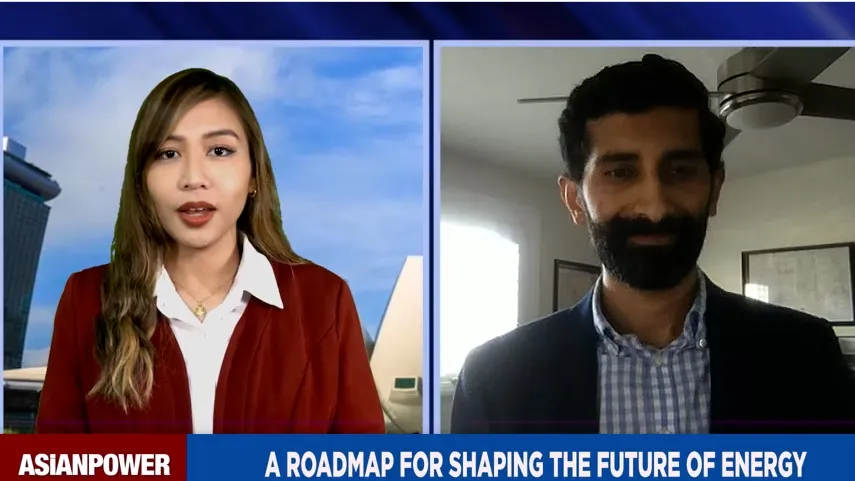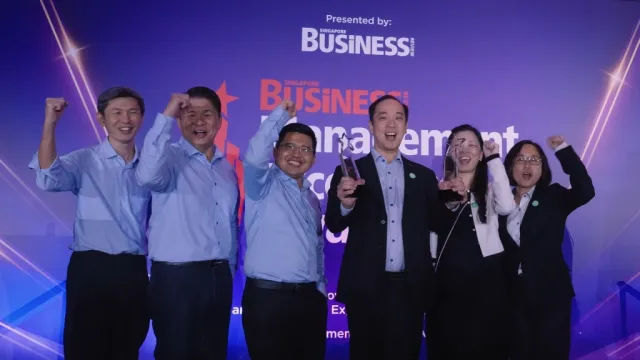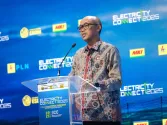
Asia tackles the energy trilemma with technology and government support
Amol Mody of GE Gas Power highlighted the importance of successful collaborations and supportive government policies for achieving a sustainable energy transition in Asia.
Home to more than half of the world’s population, Asia’s economic progress has remained dynamic despite a global slowdown. As economies in the region pick up the pace of development and look to deliver on decarbonisation commitments, it is also estimated that the resulting energy demands are set to increase at least 3% yearly until 2030 as Asia continues to grow.
Whilst the overall momentum has been promising, it is not entirely indicative of what has been occurring on the ground across the region. Varying degrees of economic and infrastructure development, funding, and technology in different Asian markets mean that conversations around energy transition in Japan will differ from those in Australia, China, and India, and that the region as a whole will continue to face multifaceted challenges.
Additionally, Asia also experiences more natural disasters than anywhere else in the world, with earthquakes, cyclones, and floods often impacting the lives of hundreds of millions who still lack basic access to reliable and cost-efficient electricity.
Against the backdrop of the ongoing energy crisis, bold, inclusive, and sustained action is needed to address the energy trilemma issues faced by Asia by ensuring and establishing a foundation of affordable, sustainable, and reliable power for all.
An effective transition to renewables will be a long, arduous journey. It will require a three-pronged strategy of technological innovation, sustained partnerships, and supportive government policies. In a recent interview with Amol Mody, President of Services for GE Gas Power, Asian Power gained valuable insights into these key elements and their roles in navigating Asia’s energy trilemma.
Gas Power as a Solution
Mody emphasised the importance of Asia’s power generation sector, which accounts for 47% of the region’s CO2 emissions. With climate change becoming a matter of concern across the globe, it has become paramount to transition to more sustainable power generation technologies. However, there are three factors that need to be considered to ensure an uninterrupted electricity supply.
“As the energy transition accelerates in Asia, it is going to be pivotal for regulators, governments, and technology providers to ensure that we are balancing these three aspects of the trilemma sustainability, reliability, and affordability,” Mody stressed.
Of the conventional fuel sources, Mody highlighted gas power as a key player in providing reliable baseload power. Mody noted that this technology has the potential to be retrofitted for hydrogen blends and ammonia combustion once the necessary infrastructure is in place. Hydrogen and ammonia are both efficient, clean-burning fuels that produce zero carbon emissions. With their high energy densities, they are able to provide substantial power output and have various applications that are suitable for different sectors.
“Gas power generation technologies emit less than half of the CO2 emissions than today’s coal-fired generation. This creates a great opportunity for various countries and markets in Asia to help further decarbonise,” he said.
For example, Malaysia’s Track 4A Sultan Ibrahim power plant can be reconfigured to support up to 50% hydrogen blends, whilst Australia is planning to upgrade existing gas turbines to scale power generation and complement renewable developments. Such integration facilitates a transition towards a lower-carbon world.
Energy companies and providers must seriously consider decarbonising both in the pre- and post-combustion stages of existing and future gas power plants. Investments should be made in precombustion, utilising fuels like NH3 or H2, as well as in post-combustion, such as ammonia.
For instance, GE Gas collaborates with Reliance in India, working on electrification and utilising available resources. They also support Guangdong Energy Group in operating a state-of-the-art 9HA gas turbine with up to 10% hydrogen blend. GE is actively involved in retrofitting combined cycle integration for post-combustion in the US and undertaking carbon capture and sequestration projects in the UK.
On top of that, GE Gas Power also has the technology to combust increased percentages of hydrogen blends and is now working on fully hydrogen-capable combustors. The company has also collaborated with various technology partners who are also working on 100% ammonia combustion. Both hydrogen and ammonia combustion technologies allow reliable and dispatchable energy with zero carbon emissions.
Technological Innovation, Policies and Partnerships
Technological innovation plays a vital role in addressing the energy trilemma. Innovations such as grid firming, advanced manufacturing systems, and repair capabilities enhance overall capacity, reliability, and security.
For instance, GE’s TM2500 mobile aero-derivative gas turbine supports grid firming in the Darwin-Katherine region in Australia. In Taiwan, the Tung Hsiao Power Plant’s integration of GE’s Aeroderivative Technology adds 180 megawatts, enhancing electricity system reliability. These examples showcase how technological advancements enable the seamless integration of renewable energy sources, paving the way for a lower-carbon future.
Furthermore, Mody described the energy transition as a “multi-stakeholder approach,” noting that policies will have to work in conjunction with technological innovation. Partnerships between energy providers, policymakers, and technology companies are instrumental in driving decarbonisation efforts.
Mody discussed some of GE’s efforts in developing advanced technologies across its portfolio of energy companies, stating that it has been working with gas power and renewable energy businesses to ensure it can meet the challenges of the future in the markets it supports.
GE is collaborating with the IHI Corporation in Japan to develop a retrofittable, 100% ammonia-capable combustion system that can fit several of its gas turbines.
In early 2024, GE will spin off into an independent energy company, GE Vernova, which will leverage more than 130 years of experience and proven innovation and unite its power, wind, electrification, and digital businesses to pave the way for a more reliable, affordable, and sustainable energy future. With a diverse portfolio of solutions to address the energy challenges of tomorrow, GE Vernova is dedicated to empowering customers, driving low-carbon economies, and delivering essential electricity for improved quality of life, health, safety, and security.
Grid solutions and power conversion technologies also play a crucial role in increasing overall capacity, reliability, and security. These ensure meeting the sustainability and reliability aspects of the energy trilemma, enabling further renewable energy integration in various markets. Lastly, looking at the grid of the future, cybersecurity is important to ensure the energy supply remains secure.
“Just as important as technological innovation is the need for appropriate policy frameworks—any sustainable policy framework that can help us make the right investments in technologies as well. Ensuring that we have the right incentives and measures in place to support reductions in carbon intensity is our key. The transparency and predictability of these incentives are also crucial as we are making investment decisions sometimes decades out from when technology will hit the marketplace,” Amol added.
Navigating Asia‘s energy trilemma necessitates a comprehensive strategy that combines technological innovation, sustained partnerships, and supportive government policies. Gas power, with its potential for reliable baseload power and compatibility with hydrogen blends and ammonia combustion, enables the seamless integration of renewable energy sources.
Decarbonisation efforts and partnerships also further contribute to a sustainable energy future. By embracing this three-pronged approach, Asian countries can achieve their economic growth objectives whilst fulfilling their climate action commitments.
With the need to empower new and innovative capabilities for a future era of lower carbon energy, GE will spin-off into an independent energy company GE Vernova in early 2024, leveraging more than 130 years of experience and proven innovation, and uniting its Power, Wind, Electrification, and Digital businesses to pave the way for a more reliable, affordable, and sustainable energy future. With a diverse portfolio of solutions to address the energy challenges of tomorrow, GE Vernova is dedicated to empowering customers, driving low carbon economies and delivering essential electricity for improved quality of life, health, safety, and security.
To uncover more about how about GE Vernova is already making an impact in Asia, including accelerating the coal-to-gas transition in Vietnam, and moving the needle on low-to-zero carbon fuels like hydrogen in Australia, watch the full GE’s Powering Tomorrow documentary miniseries.












